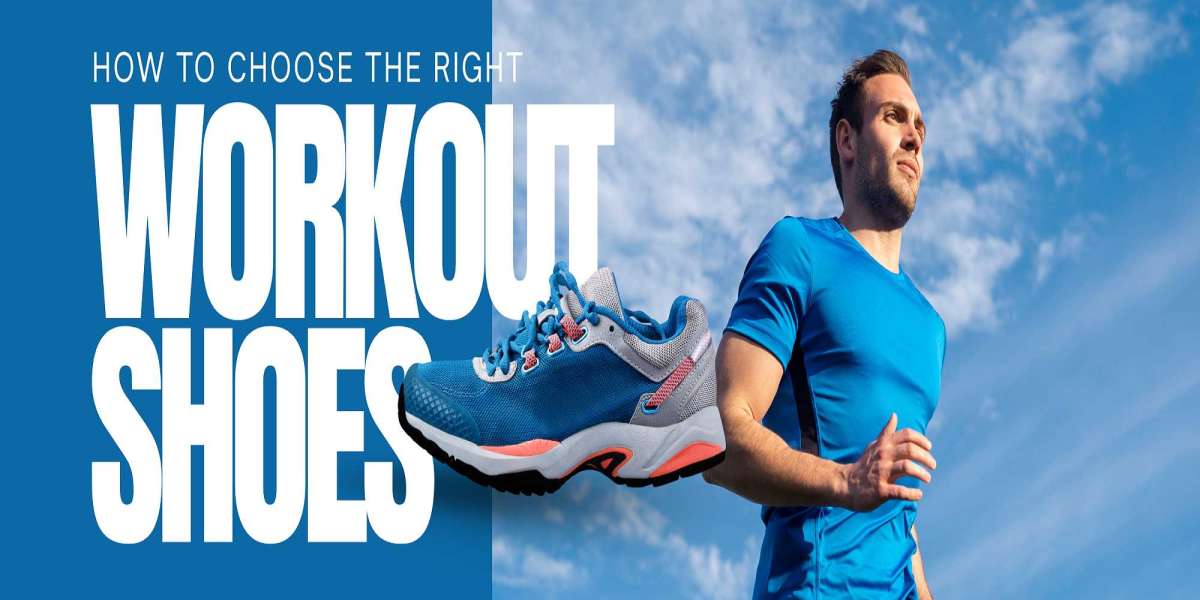Let’s be honest—most of us have grabbed the flashiest pair of workout shoes off the shelf at some point, assuming they’d magically boost our performance. Been there. But after years of gym sessions, group classes, and more than a few shin splints, I’ve learned that choosing the right workout shoes is a lot less about looks—and way more about function.
So whether you're a runner, a lifter, or just trying to close your Apple Watch rings, the right pair of shoes can make or break your workout. In this post, I’ll break down what actually matters when picking the best workout shoes for your goals (and your feet).
Why Your Workout Shoes Matter More Than You Think
You wouldn’t wear hiking boots to a dance class, right? Your feet are your foundation. The wrong shoes can lead to discomfort, lack of support, or worse—injury.
Take my friend Jess, for example. She was crushing her HIIT classes in a pair of basic running shoes. After a few weeks, she started experiencing ankle pain. Turns out, those shoes weren’t designed for lateral movement. One upgrade later—switching to cross-trainers—and the pain disappeared.
Different workouts put different demands on your feet. That’s why workout shoes aren’t one-size-fits-all.
Types of Workout Shoes and What They're Good For
Running Shoes: Built for Forward Motion
If your workout involves pavement pounding or treadmill miles, running shoes are your best friend. They’re designed with cushioning and support for heel-to-toe movement.
Look for:
Shock absorption
Lightweight build
Arch support (especially if you’re clocking serious miles)
Example: I’ve had great luck with the Brooks Ghost line—they feel like running on clouds and hold up well on both roads and treadmills.
Cross-Trainers: The All-Around MVP
Cross-trainers are the “Swiss Army knife” of workout shoes. Great for circuit training, boot camps, and strength sessions, they offer stability and support for multi-directional movement.
Look for:
Firm, flat soles
Lateral support
Versatility
Popular pick: The Nike Metcon or Reebok Nano series are both solid choices. I use my Metcons for everything from squats to jump rope sessions.
Weightlifting Shoes: Stability Over Everything
If you’re serious about lifting—especially squats and Olympic lifts—a pair of lifting shoes can make a surprising difference. They have a raised heel and stiff sole to help you maintain proper form and maximize power.
Look for:
Solid, non-compressible sole
Heel elevation (usually 0.5" to 1")
Secure straps or lacing
Note: These aren’t for running or jumping—just lifting.
Key Features to Consider When Buying Workout Shoes
Fit (It’s More Than Just the Right Size)
Workout shoes should fit snugly but not tight. Your toes need a little wiggle room, but your heel shouldn’t slip.
Pro tip: Always try on shoes at the end of the day when your feet are slightly swollen—it mimics how they'll feel mid-workout.
Support Stability
Think about what your workouts involve. Are you jumping, sprinting, twisting, or lifting heavy? Your shoes should support that kind of movement. Arch support is also huge, especially if you have flat feet or high arches.
Durability
A shoe that wears out in a month isn’t saving you money. Check user reviews for long-term performance, especially if you're using them 4–5 times a week.
How Often Should You Replace Your Workout Shoes?
Most experts recommend changing out your workout shoes every 300–500 miles (for runners) or about every 6–12 months for general use. But that can vary depending on how often you train and your body mechanics.
Signs it’s time for a new pair:
Worn-out treads
Compressed midsoles
Uneven wear
New aches and pains
I personally swap mine out every 8 months, even if they “look” okay. Trust me—your knees and back will thank you.
My Favorite Workout Shoes (And Why)
Here’s what I’m wearing these days, in case it helps:
Running: Brooks Ghost 15 – Great cushioning for long runs and zero break-in time.
Cross-training: Nike Metcon 9 – Super stable for lifting but flexible enough for jumping and agility drills.
Lifting: Adidas Powerlift 5 – Affordable, reliable, and gives me that extra edge in squats.
Everyone’s feet are different, so what works for me might not be perfect for you. But these have been tried and tested across dozens of workouts.
Conclusion: Invest in Your Feet (They Do a Lot for You)
Here’s the bottom line: choosing the right workout shoes is one of the smartest investments you can make in your fitness journey. The right pair can improve your performance, prevent injuries, and just make your workouts more enjoyable.
Don’t be afraid to try on a few pairs, return what doesn’t work, and talk to staff at a specialty store if you can. Your future self—stronger, injury-free, and moving better—will thank you.
Read Also: Hoka Running Shoes Reviewed: Cushion, Comfort, and Performance Explained
Ready to Upgrade Your Workout Shoes?
If you’re not sure where to start, make a list of your weekly workouts and match them to the right type of shoe. And if you're looking for personalized recommendations, leave a comment below or shoot me a message—I’m always happy to help a fellow fitness nerd.











